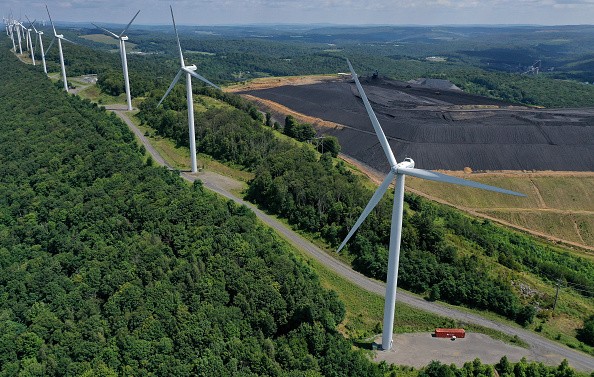Interesting Engineering reports that researchers from Sandia National Laboratories in New Mexico have developed a new power generation technology named "Twitstact" as they aim to partner with the energy industry. This will lessen the demand for expensive earth magnets in large wind turbines, which are also considered rare.

The alternative development is a simple recuperated closed-loop Brayton and the working fluid that will be used is supercritical carbon dioxide. As per them, the gas will continuously loop being pressurized, heated, and expanded through a certain wind turbine that may generate electricity. For it to complete the cycle, the fluid will be cooled in a recuperator after the fluid exits the wind turbine.
As Sandia Research Scientist and Engineer Jeff Koplow said, researchers started asking one another difficult questions for them to develop this. He stated, "We knew it would be game-changing if we could find a way to get around the limited service lifetime of conventional rotary electrical contacts,"
A lot of time was allotted for them to discuss and consider inventing an alternative way of making a rotary electrical contact architecture. After several discussions, the researchers came up with Twistact.
Also Read : Scientists Create An 'Odd Material' for Wind Turbines That Can Be Recycled Into Gummy Bears - How?
What does it do?
Twistact offers a lot of benefits. One of them is completely removing rare-earth magnets as these are expensive and supply chains that harm the environment. Adding to this is that it offers no maintenance or replacement parts once it is used as researchers have tested its capabilities and it resulted in a 30-year operating service time of the multimegawatt turbine.
Having these factors, it may reduce the traditional rotary electrical contract's performance which may cause much shorter life cycle operations, high maintenance performance, and replacement costs as per Daily Energy Insider.
Sandia is looking for potential partners with generator manufacturers for them to produce Twistact and transfer it into next-generation wind turbines. The laboratory is also considering inclining electric vehicles or doubly fed induction generators by developing a certain application for the two mentioned.
Koplow commends Sandia for developing Twistact as it "represents a pretty radically different idea. That takes courage to get behind and fund."
As Power reported, the Department of Energy's Supercritical Transformational Electric Power (STEP) program supported the Sandia project. This program aims to work with a group who develops and invent new technology. Together with STEP is Sandia's co-sponsors, Nuclear Energy, Fossil Energy and Carbon Management, and Energy Efficiency and Renewable Energy offices.
Related Article : Norway Company is Developing Contra-Rotating Floating Wind Turbines That May Be the Biggest in the World
This article is owned by TechTimes
Written by Inno Flores
ⓒ 2025 TECHTIMES.com All rights reserved. Do not reproduce without permission.




